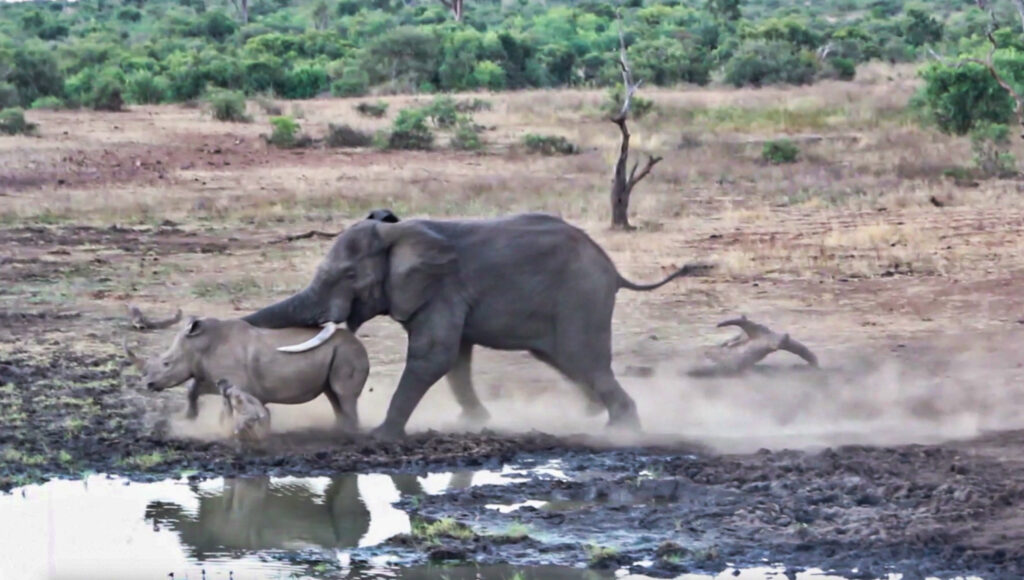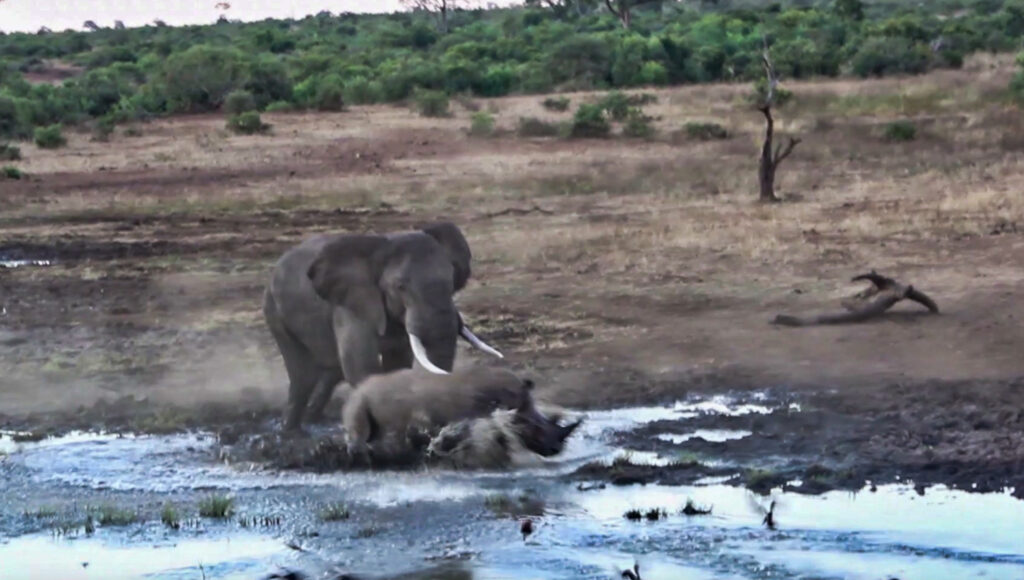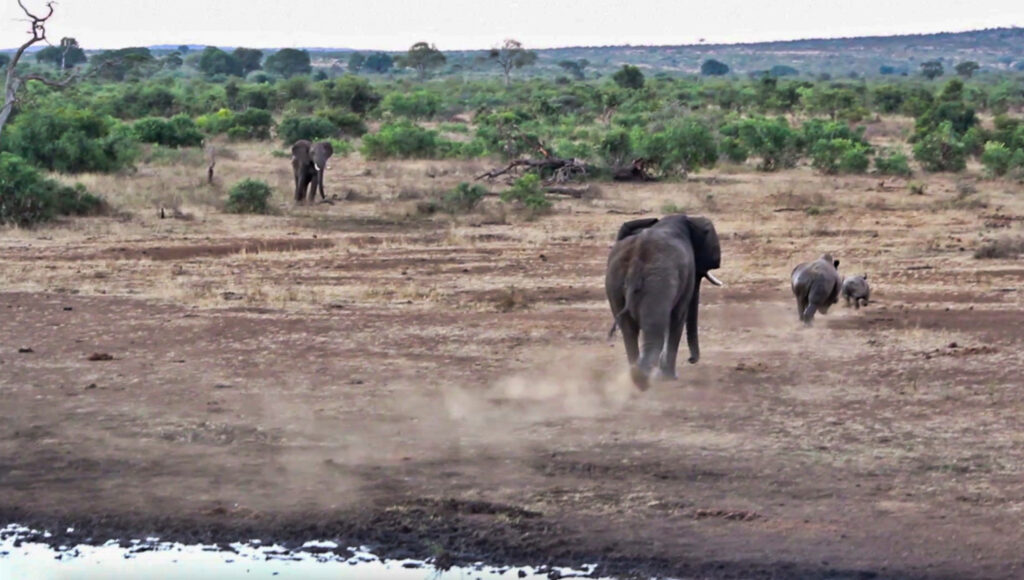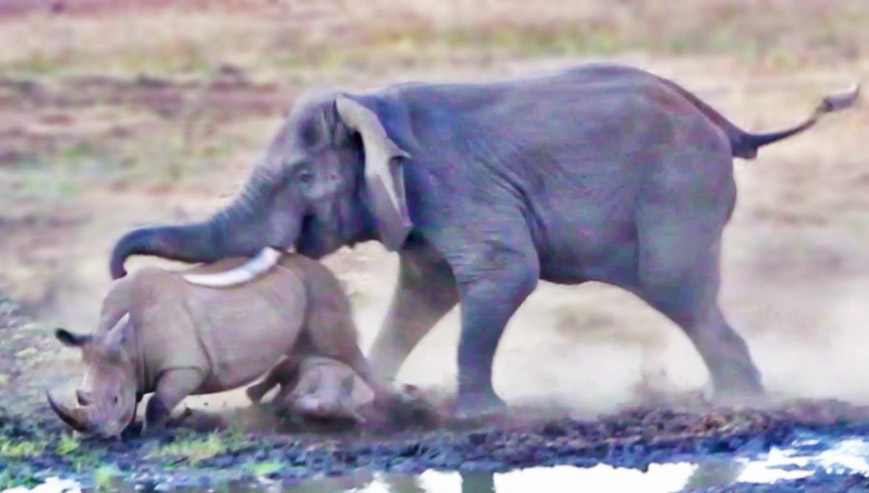
For elephants, securing the prime spot at a watering hole is a pretty big deal. The hefty herbivores won’t hesitate to throw their weight around if anything gets in their way on route to the water.

Tourist Krishna Tummalapalli was on safari with his family in South Africa’s Kruger National Park earlier this year where he was able to film an astonishing interaction between a thirsty elephant and a bold rhino that (perhaps foolishly) tried to defend its position at a drinking hole.
Tummalapalli was watching a mother rhino and her calf quenching their thirst when a pair of elephants emerged on the horizon. ”We were curious about what was about to happen but we never expected them to get into a fight,” he explained to Latest Sightings.

The rhino – seemingly startled by the sudden appearance of an elephant directly behind it – turned to face the interloper before charging towards it. For a brief moment, the two grey giants faced off staring each other down in a cloud of dust until the rhino realised it was outmatched and turned tail. As it did so the elephant lunged forward pushing the rhino with its trunk and tusks, pushing its much-smaller rival into the muddy shallows where it almost trampled its own calf.

Tummalapalli and his family were shaken up by the unexpected scuffle, but “felt a bit more at ease once the rhinos started running away with seemingly no injur[ies].”

Satisfied that the rhinos were no longer a problem, the elephant turned its attention on the human spectators. “I don’t know whether it would have attacked us, but we put some more distance between the safari vehicle and the aggressive elephant before we could find out,” explains Tummalapalli.
Elephants are typically gentle creatures, however, they can become aggressive if defending young or asserting their dominance. Males can be particularly belligerent when they are in musth – a heightened hormonal state characterised by elevated levels of testosterone and more agitated behaviour.

Caitlin O’Connell, author of Elephant Don: The Politics of a Pachyderm Posse, explained to National Geographic back in 2015 that elephants are fussy about their drinking water and may fight for access to the prime spot at a watering hole. Once an individual has claimed dominance over a resource such as drinking water, it is assumed that it will have dominance over the rest of the herd.

O’Connell describes how she watched a dominant male in Namibia’s Etosha National Park claim control over a spring that fed a watering hole, allowing the big bull access to the best-quality water. ”[T]hat spot is reserved for the Don,” she said in an interview. “When he comes in, it’s like the parting of the waters. The other males step away so that he can have that spot without contest.” If other herd members wanted to drink, they would “request permission” from the Don by intertwining trunks with him. Lower-ranking herd members wouldn’t even try and simply assumed their position at the other end of the pan.